 63 degrees when I woke up this morning Walked the dog Drank some coffee Read an old book I’d never read before Chatted with a neighbor... for too long. Teachers went back to school today. Not me 17 years A consultant now. Love my freedom! Freaked out by it... Should I still be sitting here reading and writing? On my own schedule... Ahhhh But not on a pay schedule... Ohhhh Another cup of coffee then I will paint the deck.
0 Comments
 High school English curriculums are filled with novels. They are fun to read and fun to teach. But if you have struggling readers in your class, teaching a novel can really be difficult...for the teacher and the child. A struggling reader may fall behind in the reading. May not catch the point of the novel. May become disinterested and defeated. One thing that helps me and my students are what I call STOPS! Here is how they work: I assign reading- Let’s say Chapter 1. I give the students an accompanying list of STOPS. We look them over before they set off to their reading. This just helps them remember, a little, that on page 5 there is a STOP. What is a STOP? It is just a question that helps the student know what to focus on. It is not usually a comprehension question. I usually do not ask questions that have right answers. Examples “Page 5, paragraph 2. STOP-- what do you notice about the setting?” "Page 6-end of page STOP-- what does this town's name make you think of?" "Page 10- when narrator says 'enter quote here' is this in line with what we know to be true?" They write their answer on a post it note and stick it in the book. These post its are in addition to the regular annotations they make-- questions, connections and inferences. The STOPS teach them is what good readers do. We interact and engage with the text. We look for clues the author left us. STOPS are also setting students up to be able to answer text dependent questions. They are using the text to help them form opinions, inferences and ideas about the text. These STOPS are amazing for teaching character development, foreshadowing, symbolism and those other beautiful techniques authors use to engage us- the reasons we teach novels. STOPS allow students to pick up little clues along the way so when the character, foreshadowing, symbol...comes to fruition they can have a hand in helping unfold and uncover it with you. It is much more fun than at the end of the book you telling them it happened and showing them via notes! These STOPS help struggling readers by pointing out to them what is important. STOPS help them know what to focus on. If they fall behind, they can at least skim and focus on the STOPS. It gives them a reasonable way to catch up while staying engaged and focused on the important aspects of the novel. STOPS help all burgeoning readers, not just the struggling ones. Even a student who has great reading fluency and comprehension is new to the literary devices we are teaching them to recognize, understand and analyze. STOPS are also awesome to help set up class discussions, small group discussions and lit circles. You can have a far more robust discussion if all the students were all thinking about the same aspect of the book rather than what they thought was important or interesting. As good readers we take for granted the skills we have. Discerning what is important vs what is not is a skill. We must impart it to our students. STOPS (or whatever you'd like to call them) help us do that. WARNINGS-- do not make too many STOPS. It will prevent kids from having a flow to their reading, and that is annoying do not use STOPS for pleasure reading Real readers…
Students should be given the opportunity to read what they like. Allow them to choose their books. Encourage them to try different genres to figure out their likes and dislikes. Schedule regular “choice reading” days for students to read books off-level. They could read magazines, comics, e-books, or listen to audio books. Our students spend plenty of time being forced to read things they don’t understand and can’t relate to. Teach them what it’s like to really enjoy reading.
Here a few of my students favs:
It is last period on a rainy Friday. I am teaching a 10th grade reading class. Not an English class, a reading class. It is a dream come true for this inner city high school teacher. The class is quiet. We are in what Nancy Atwell would call “The Zone.” I am being observed by my principal. The bell rings and the voice on the overhead says please prepare for your afternoon announcements. All of us… the students, me and even my principal (she brought a book to the class because she knew we did Reading Zone) snap to attention, look around to make sure we were not the only ones that forgot time and space….remember we were in The Zone.
I look up at my principal. Shoot- I think… I got too into my book that I forgot my closure portion of the class. She is laughing with some girls in the back. She was in The Zone too. Marquis, a student known to the front office for being a pest in class ,lowers his book, his feet still on the chair in front of him. He looks at me and says “ Miss, Imma be like this all weekend.” The class laughs. Totally worth missing closure portion of my class even during an observation! I was fortunate enough to teach at a school that supported and encouraged failure amongst its teachers. So when I pitched the idea that our 10th graders needed a reading class in addition to their English class and was given a $5,000 budget, I was only partially freaking out when it did not work.
Actually, I was covered in hives. But that motivated me to hit the books and talk with the kids to come up with something that was amazing. I will save you the pain of my failure and just get to my success! So after asking the kids what they wanted and after reading I Read It But I Don’t Get It by Chris Tovani and The Reading Zone by Nancy Atwell this is what we ended up with. Here is what it takes: Tons of books (you can procure these at thrift shops, yard sales and Donors Choose Projects) Tons of post its List of what good readers do List of what to do when I am stuck/lost Honesty about your reading habits Benchmarking system to produce data A healthy reading habit of your own Computers (optional) First- fill the classroom with books. Invite colleagues and students to bring books in. When you get a large batch of books-- pretend it is Christmas. I taught 6 classes/day. When a box of books came in from our Donors Choose Projects, I had to repack them 6 times so the next class thought they were opening the books. That’s how excited my students, inner city below reading level 10th graders, got when they got to dig through the books. Second-explain to the students the point of the class. Here are some key points I hit
Third- things to teach
Eventually when I returned to the English classroom, I was able to incorporate so much of this beauty into that class. Future blogs will highlight what I did there. To some the thought of going to a “meeting” about your blog might dredge up images of offices with people in stuffy clothes and judgemental attitudes and deadlines and stress. Our blog meetings are quite the opposite.
We prefer to meet outside Sitting on the patio Cool breeze Lawnmowers and light traffic as soothing white noise Helicopter seeds fall on our heads as we giggle and sip more champagne, relieved that it’s not bird poop Angela’s chickens cluck and scamper around the yard It takes a special kind of friendship to work on a project together To share writing and ask for real feedback So rewarding to share a creative experience with a friend We are sitting on my back deck drinking Prosecco… no, it is not too early for a cocktail, September is just around the corner and Tuesday afternoon blogging sessions will soon be less relaxing and more worky-worky. We just started our blog, so we still meet each time we are about to post...confidence in numbers I suppose. I have a small back yard that backs into a parking lot of a failing shopping center; my house makes a triangle with the hospital and the fire house so we are easily distracted by the sirens, my neighbor cutting her lawn, my dog barking at people dropping unwanted clothes at the thrift shop collection bins and my chickens clucking around. We check our Twitter...the pride we felt last week at our first 4 followers has diminished as we still have 4 followers. Then we see Slice of Life. Another distraction...a wanted one this time. We set to typing... then we will get to editing each other’s proposed post and another glass of Prosecco.
It’s important to know who you are. This is important for life and true in any profession but i’ll argue that it’s crucial in education. Your teaching persona is the foundation of your classroom management style and the basis for how you will create a classroom community. We all have different versions of ourselves...the shades of difference in how you speak and behave based on the people around you at any given time. Most of us act one way when we’re with old friends at happy hour, a different way when we’re at home, differently again when we’re visiting grandma or meeting a potential employer. What version of you will make the best teacher for your students? Consider your true self...what are some common denominators among all the versions of you? What kind of teacher do you want to be? Does that vision align with your personality? Can you make small adjustments to enhance or exaggerate some traits and diminish or modify others? My core personality traits:
I am direct, considerate, loving, dependable, occasionally short-tempered, and I have a tendency to curse a lot. Some of these work very well in a classroom. Others do not. I obviously do not swear around or to students. Though I have been known to close the door at the end of the day and blow off some steam with a colleague ;) Early on in my career I knew that I would need to make some adjustments. I knew that my students needed someone consistent, firm, and loving. They did not need a reactionary hot-head. So I smoothed the edges to create this teaching persona. I stayed true to myself by finding this version of me that could be successful in the classroom. My teaching persona: The Straight-Shooter This version of me is clear, consistent, calm, matter-of-fact, loving, and welcoming. My students know that I mean what I say and say what I mean. Everytime. Everyday. Consistency is crucial. They know I am fair and honest. If I make a mistake, I apologize. Being consistent and using direct explicit language in the classroom helps students understand expectations and helps me keep my frustration level at bay which in turn reduces my desire to curse like a sailor. It’s win-win. I tell kids when I’m feeling frustrated. Modeling self-regulation and how to appropriately express emotions and feelings teaches kids strategies to monitor themselves and self-regulate their own behavior. It also helps me. Again, win-win. I make real connections with every kid. I make an effort to get to know them and their families. And I allow them to get to know me. I share pictures and stories during Morning Meeting and Writer’s Workshop. Building real relationships with students helps them establish a sense of belonging, significance, and fun. They feel safe enough to take academic risks and then true learning can occur. I am fortunate that my core personality and the needs of my students closely align. It was easy to find my teaching persona because it was a true version of me. I have known many educators who were excellent instructors and had a true passion for teaching children but didn’t have the right teaching persona. I’ve had colleagues whose personalities didn’t match with what our students needed. Its very hard for a soft-spoken, sing-song-y, needs-to-be-loved-by-kids person to succeed in the inner-city classroom. Even if they are super knowledgeable and great at teaching content. It’s hard for these folks to find a teaching persona that’s a true version of themselves AND also meets the needs of the kids. Some of these colleagues realized that this isn’t the right job for them. And that’s ok. They were miserable and their students were miserable. Life is too short to hate your job. Whether you are a new teacher or a veteran looking for a teaching style make-over, it’s important to consider whether or not your teaching persona and management style are working for you. I encourage you to find the persona that allows you to keep true to yourself AND will help you meet the needs of your students. Once you’ve found that persona, clearly define your management style to yourself. Consider ways to build the classroom community with your students. Create responsibilities (not rules) with the kids, clearly explain and model your expectations, and give them time to practice. All while maintaining the new version of you...the rock-star teacher. Check out these resources: To get to know yourself - http://schoolreforminitiative.org/doc/compass_points.pdf The best classroom culture program/research - Responsive classroom is the foundation of my classroom management and culture - https://www.responsiveclassroom.org/ Read this book! And anything else written by Paula Denton. My mom was a stay at home mom. She cooked every night, came on field trips, volunteered as homeroom mom and watched my field hockey games even though I rarely played. She made brownies every first day of school, we stopped at the bookstore on the first day of vacation each year and she read me books each night. She hugged me every day, told me she loved me and that she thought I was the best of all my friends. She also yelled at me loudly when I did something wrong or that she had explicitly told me not to do. She slapped my face for back talking. She told me the truth even if it made me cry. She apologized when she was overreacting.
She was my first classroom management coach. Now- yelling and hitting students is obviously terrible. And not what I am suggesting or what I did. BUT- loving kids unconditionally, showing that love right after they have disappointed you, and apologizing to them when you mess up… those are the keys to running a classroom that oozes respect and community. However, it’s a hard thing to teach. My first year of coaching teachers I focused mainly on procedures, consistency and setting clear expectations and lines(so important and impossible to have a classroom conducive to learning without these). But I was noticing that still some teachers were having trouble in their classrooms. Students were off task, students were coming late and being disruptive. I am thinking of one specific teacher especially because he is the one who had highlighted for me how I had failed him. 3 years after I coached him we were talking about the amazing changes in his class, and he told me it took a while to get it. He was too focused on the rules and the consequences and was not responding to the students as humans. He was not behaving like an Italian mom! He approached management the way I taught him to: systematically. Systems are important. I still coach teachers to create them, articulate them, practice them and stick to them with the kids, but there is more to creating a classroom that thrives. And that is just being humans with the younger humans in your class. Teachers have to give consequences. They have to have rules. BUT teachers MUST also encourage students- especially after they’ve made a mistake. Teachers MUST remind students that consequences are natural and not personal. Teachers MUST apologize if they’ve wronged a child (and apologize publicly if you’ve wronged publicly). Teachers MUST, like my mom, show unconditionally love to all students even (possibly especially) when those students have misbehaved, acted disrespectfully and hurt your feelings. I know what good readers do. I’m a good reader. But how do I teach my students the specific skills they need to become good readers too? First, we know that good readers do a lot of things simultaneously. It is our job to untangle the multitude of skills and break them down into explicit strategies for students to practice. Their brains need time to practice each skill separately until they are strong enough to do them all together. (If you teach Guided Reading or Small Group Strategy lessons you know what I’m talking about.) To untangle this mess, consider the difference between goals, skills, and strategies. Jennifer Serravallo does an amazing job of explaining the relationship between each of these distinct categories in The Reading Strategies Book: Your Everything Guide to Developing Skilled Readers. “Within each goal, there may be one or more skills that a reader would need to work on. For example, if a student is working on a goal of understanding character, that may involve inferring (reading between the lines to name traits/feelings) but also synthesis (putting together information across a book to determine how a character changes). Once you’ve identified the skills, you can find specific strategies to accomplish those skills.” p.5 So how do we figure out what goal, skills, and strategies students need? Collect some data! Use your favorite diagnostic/formative assessment tool (IRA, DRA, QRI, running record, etc.) to determine your students’ strengths and weaknesses. Then use Serravallo’s Heirarchy of Possible Goals (p. 3) to prioritize. Use the remaining chapters of the book to find specific strategies to teach during Guided Reading or Small Group Strategy lessons. Each strategy has tips for teaching and colorful visuals for students to use as reminders, post-its, bookmarks, charts, etc.
Stay tuned for a top 10 list of my favorite strategies and how to get students to use them independently! Resources: Reading Strategies Book: https://www.amazon.com/Reading-Strategies-Book-Everything-Developing/dp/032507433X http://www.jenniferserravallo.com/ Teacher’s College Reading & Writing Project Running Records: http://readingandwritingproject.org/resources/assessments/running-records |
AuthorSKate Jaworski ArchivesCategories
All
|

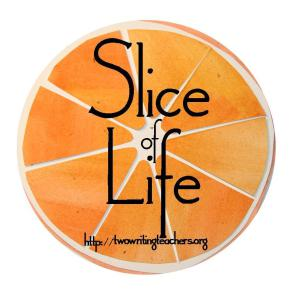
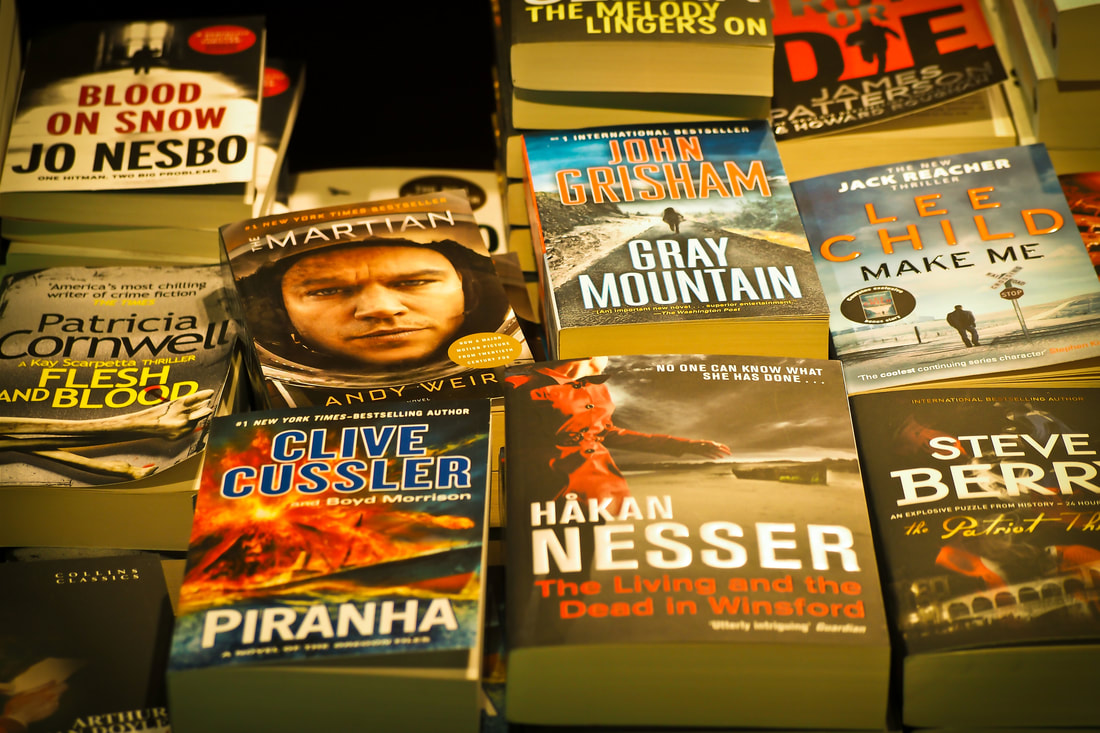
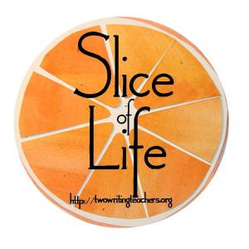
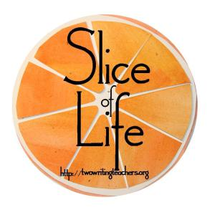


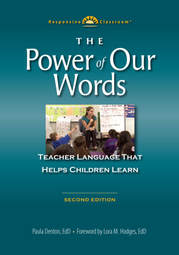

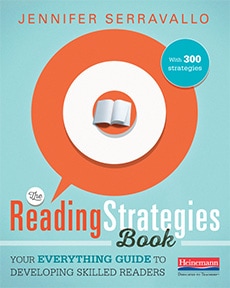
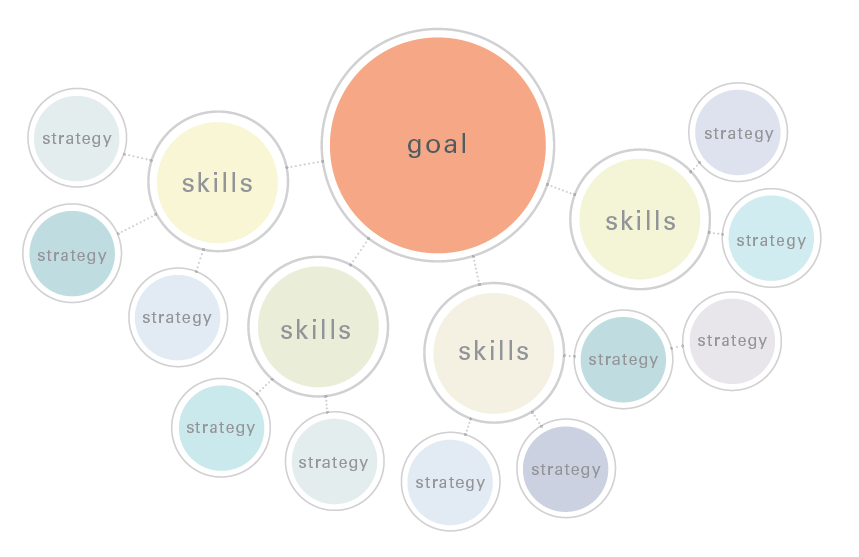
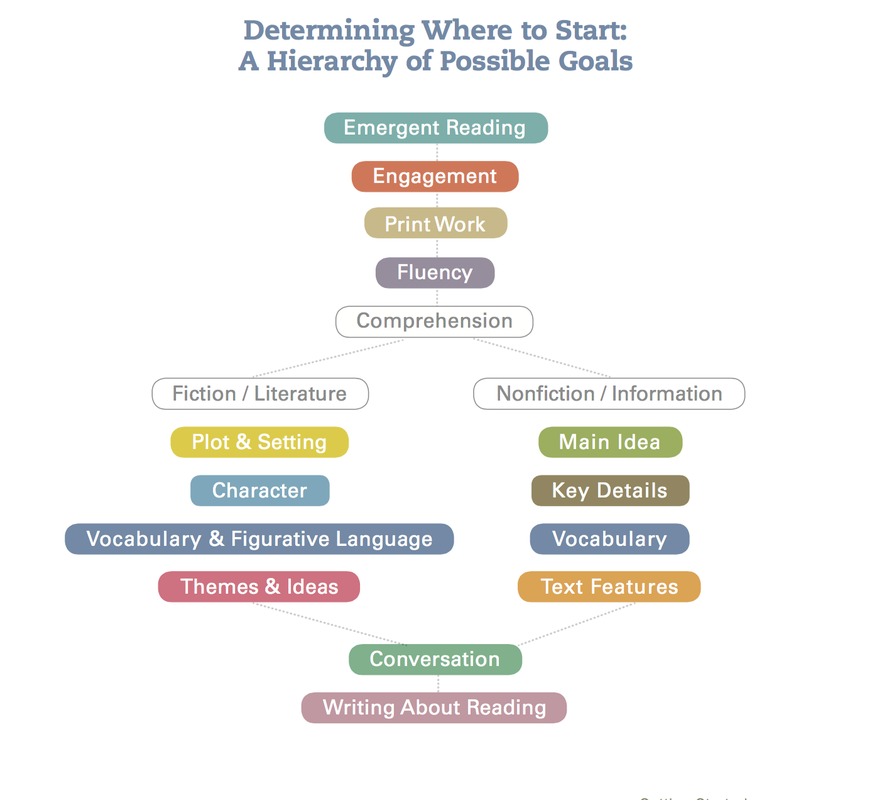
 RSS Feed
RSS Feed
